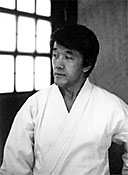vol 20, September 2001

Welcome to the September issue of Bu Jin's Online Newsletter

It's September, and change is in the air. As summer draws to a close many dojo are noticing a welcome increase in attendance. New members are signing up and old ones are returning from holiday travels and seminar-treks.
Each fall, as I see eager new students getting started in their classes, I wonder which of them will "stick" for the next level, and which will leave after their introductory course. There's no sure way to predict, but in the end, if five students out of ten continue on, most instructors would consider it a success. The seasonal swell in membership unfortunately diminishes all too quickly, and before the year is out, we often find ourselves wondering what happened to that large crop of new beginners.
Assess the situation
The reasons for "dojo drop-out" are numerous and varied, and now is as good a time as any to make an assessment of your own school. For starters, just pretend you are a person in search of a martial art, who has stepped into your dojo for the first time. See your dojo from a fresh perspective, through the eyes of a potential student. As a parent who has crawled around the house on all fours to spot potential toddler-hazards, I can vouch for the benefits of altering one's viewpoint.
As a "New Student," you would evaluate the obvious things such as dojo location, cleanliness and safety of the facilities and equipment, teacher qualifications, class schedule, fees and curricula, house rules, liability waivers, and so forth. All of these should be in good order, and information about them should be readily available.
The intangibles are equally important - is the "flavor" of the dojo what you would like it to be? Is there a dojo "greeter" to welcome visitors when they walk in? If youth classes are offered, do parents feel welcome? Instructors, senior students, and general membership all have a stake in creating the flavor of the dojo.
Find what works
The one thing a new student is not equipped to evaluate (and therefore the instructor must) is the progression of courses, a factor that, in my experience, has a lot to do with "stickiness." A smooth transition from one level to another is critical. If the gap between Beginner and Intermediate or "Open" class is too great, some students simply may not be physically or emotionally ready to make the leap. But if this is their only choice, chances are they'll opt out instead of in.
What a loss. This can be easily remedied by ensuring that -
1) class content and schedule are carefully designed to work together as stepping stones;
2) new students are not confused by a rapid succession of teachers; and
3) there is a strong sense of community and a fostering of the sempai-kohai relationship.
Small dojo or clubs, by their very nature, are exempt from some of these issues. Mid-sized and large dojo, on the other hand, must address them.
Give this a try
Large dojo might consider this solution, which has worked well in our dojo: a rotation of three teachers and three incremental classes (Beginner I, Beginner II, and Intermediate) that run on a two-month cycle. But rather than passing the student off to the next teacher/class after two months, the teacher moves with the students. Thus the Beginner I teacher also teaches Beginner II and Intermediate classes, and the second teacher starts another Beginner I class two months after the first Beginner I. Thereafter, the rotation continues.
The advantages of this method are that a solid student-teacher relationship has time to develop (six months), and by the end of the three classes, the student is usually confident enough to join more advanced classes. An important bonus is that the teachers do not become jaded from teaching the same material repeatedly.
It pays to experiment. A schedule need not be written in stone nor in tradition, but should be adjusted as needed. Periodic assessment with a "beginner's mind" is a good thing to do every so often.
A parting wish for all - May your dojo be "sticky!"



